

 |
Search the Site with

|
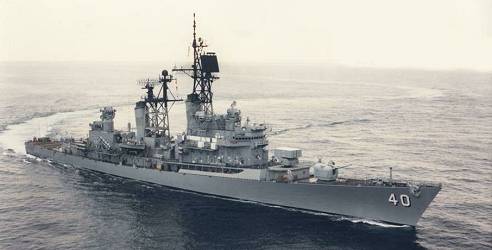 | 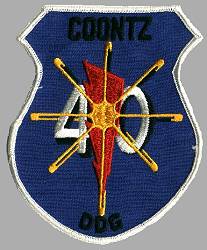 |
USS COONTZ was the fourth FARRAGUT - class guided missile destroyer and the second ship in the Navy named after Admiral Robert Edward Coontz. Commissioned as a guided missile frigate (DLG), the USS COONTZ was reclassified as guided missile destroyer (DDG) on June 30, 1975, changing its hullnumber from DLG 9 to DDG 40. Decommissioned on October 4, 1989, and stricken from the Navy list on January 26, 1990, the USS COONTZ was sold for scrapping on February 10, 1999.
| General Characteristics: | Awarded: November 18, 1955 |
| Keel laid: March 1, 1957 | |
| Launched: December 6, 1958 | |
| Commissioned: July 15, 1960 | |
| Decommissioned: October 4, 1989 | |
| Builder: Puget Sound Naval Shipyard, Bremerton, Wash. | |
| Propulsion system:4 - 1200 psi boilers; 2 geared turbines | |
| Propellers: two | |
| Length: 512.5 feet (156.2 meters) | |
| Beam: 52 feet (15.9 meters) | |
| Draft: 25 feet (7.6 meters) | |
| Displacement: approx. 5,800 tons | |
| Speed: 33 knots | |
| Aircraft:none | |
| Armament: one Mk 42 5-inch/54 caliber gun, | |
| Crew: 21 officers and 356 enlisted |
Crew List:
This section contains the names of sailors who served aboard USS COONTZ. It is no official listing but contains the names of sailors who submitted their information.
USS COONTZ Cruise Books:
Accidents aboard USS COONTZ:
| Date | Where | Events |
|---|---|---|
| July 14, 1981 | 70 miles from St. Croix, US Virgin Islands | USS COONTZ accidentally fires a Harpoon anti-ship missile with a high-explosive warhead during a maintenance test. The missile impacts and is lost at sea. |
About the Ship's Name:
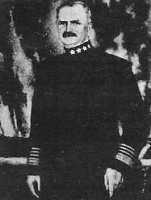 Born in Hannibal, Missouri, on June 11, 1864, Robert Edward Coontz graduated from the Naval Academy and was commissioned Ensign in 1885.
Born in Hannibal, Missouri, on June 11, 1864, Robert Edward Coontz graduated from the Naval Academy and was commissioned Ensign in 1885.
Throughout a career that spanned nearly fifty years, the Admiral left an indelible mark on Naval history. In addition to serving in the Spanish-American War, he was appointed Commandant of Midshipmen at the Academy in 1909, served as Governor of Guam, and for his work at the Naval Shipyard at Bremerton, Washington during World War I, he was awarded the Distinguished Service Medal. His accomplishments at the yards prompted Secretary of the Navy, Josephus Daniels, to refer to him as "one of the best executives in the Navy".
In 1919, the billet of Chief of Naval Operations became available. The search for a capable administrator to fill the navy's top billet was not a lengthy one. Secretary Daniels, without hesitation, turned to Coontz, the man responsible for expanding the ranks of both officer and enlisted men during a time when shorter enlistments were causing manpower problems.
Coontz is also credited with creating the bureau of aviation in the Navy Department. America's first aircraft carrier became a reality during his term. As CNO, Coontz was successful in reorganizing the operations and functions of his office, and he completed one of the major tasks of his term: establishing a combined U.S. Fleet.
He was relieved in July 1923 by Admiral Edward Eberle, and accepted a new billet as Commandant of the Fifth Naval District and Commanding Officer of the Naval Base at Norfolk until he retired in 1928.
Admiral Coontz died at the Naval Hospital in Puget Sound, Washington in 1935. He is buried in the family plot in Mount Olive Cemetary in Hannibal.
USS COONTZ History:
USS COONTZ was commissioned as a guided missile frigate (DLG 9) on July 15, 1960. USS COONTZ reported for duty as a unit of the Cruiser-Destroyer Force, U. S. Pacific Fleet in May of 1961 and joined the U. S. First Fleet with her homeport in San Diego.
In August of 1961, COONTZ commenced the first of her seven deployments with the U. S. Seventh Fleet in the Far East. USS COONTZ has served in the Pacific Fleet with distinction, including several tours in Vietnamese waters. In January of 1971, shortly after her Seventh Fleet tour, USS COONTZ departed San Diego via the Panama Canal for Atlantic waters and the Philadelphia Naval Shipyard.
USS COONTZ was decommissioned on February 23, 1971, to undergo an extensive anti-air warfare (AAW) modification. Newly homeported in Newport, Rhode Island, USS COONTZ was recommissioned on March 18, 1972, with a six-month test period in Guantanamo Bay, Cuba, and other Caribbean operation areas.
In the fall of 1972, USS COONTZ sailed on a "Shakedown and Show-the-Flag" cruise to South America and Africa, after which she entered the Boston Naval Shipyard for a three-month post-shakedown availability period. Following an extensive training and material preparation period, USS COONTZ departed on July 6, 1973, for her first deployment with the U.S. Sixth Fleet operating in both the Eastern and Western Mediterranean Sea.
USS COONTZ changed her homeport from Newport to Norfolk, Virginia, on January 17, 1974. USS COONTZ entered the Charleston Naval Shipyard for overhaul in the spring of 1975, and returned to Norfolk on October 1, 1975.
After her designation change to guided missile destroyer (DDG 40) on July 1, 1975, USS COONTZ entered the Charleston Naval Shipyard for overhaul until her return to Norfolk on October 1, 1975.
USS COONTZ reported to Standing Naval Forces Atlantic (STANAVFORLANT) on January 17, 1976, visiting ports in the Caribbean, United States, and Canada with ships from four other countries prior to Force deployment to Northern Europe, where she visited eight countries and participated in numerous NATO exercises.
After a one-year regular overhaul in the Norfolk Shipyard, USS COONTZ departed on July 21, 1978 for comprehensive gunnery, missile and Harpoon system qualifications and refresher training at Guantanamo Bay, Cuba.
USS COONTZ participated in six months of local operations including GULFEX '78 in November 1978 and a tour as flagship for STANAVFORLANT, in transit to Wilhelmshaven, West Germany, in 1979. During her tour as flagship, USS COONTZ played host to more than 35,000 visitors in eight NATO countries and participated in various exercises with over 30 NATO ships. STANAVFORLANT operations included areas above the Arctic Circle, in the Baltic Sea, in the North Sea, and the Norwegian Sea.
In the fall of 1982, USS COONTZ deployed for a West African Training Cruise and operations in the Mediterranean Sea, including a transit into the Black Sea, which is heavily patrolled by the Soviet Navy. This was followed by a port visit to Dubrovnik, Yugoslavia.
USS COONTZ participated in operations around the Central American eastern coastline in mid-1982 with a port visit to Bonaire, Netherlands Antilles, the first visit by a U.S. Navy ship in more than 13 years.
In July of 1982, USS COONTZ entered the Philadelphia Naval Shipyard for a one-year regular overhaul, undergoing various configuration changes and equipment additions.
Regular overhaul was completed, on time, in July of 1983.
Three months out of overhaul in October of 1983, USS COONTZ steamed to the Caribbean Sea for weapons systems testing. While undergoing tests, USS COONTZ received tasking and altered course for Operation URGENT FURY off the coast of Grenada where she provided gunfire support and small boat interdiction for ten consecutive days in support of the amphibious assault. For this action, USS COONTZ was awarded the Armed Forces Expeditionary Medal and the Meritorious Unit Commendation.
In 1984 USS COONTZ underwent workup in preparation for refresher training and a fleet exercise. Upon completion, USS COONTZ deployed to the Mediterranean in October 1984 and conducted operations in the Eastern Mediterranean Sea off the cost of Beirut, Lebanon and in the Black Sea, returning to Norfolk, in May 1985.
From August to October 1985, USS COONTZ underwent her first phased Maintenance Availability, a new maintenance concept involving intense industrial repairs designed to maximize operational availability.
In November 1985, USS COONTZ participated in Operation Bold Eagle, a joint exercise conducted with the U.S. Air Force and U.S. Army in Florida and the Gulf of Mexico.
USS COONTZ was a vital link in maintaining air defense, coordinating with airborne Air Force AWACS units and Army ground units.
USS COONTZ' next joint-participation exercise was Ocean Venture '86. USS COONTZ, along with other U.S. Navy Ships and various U.S. Coast Guard cutters conducted quarantine operation exercises in Caribbean operation areas. During this time, COONTZ was given opportunity to re-qualify its Naval Gun Fire Support Team near the Vieques Island Range of Puerto Rico.
From October 15 - 30, 1986, USS COONTZ was involved in CASTEX (Coordinated At-Sea Exercise) 1-87, in which 17 U.S. Navy ships and a number of shore-based U.S. Navy aircraft participated. The exercise was designed to provide multiship and battlegroup training to maximize fleet readiness.
Immediately following CASTEX 1-87, USS COONTZ was awarded its first-ever Battle Efficiency award. In addition, USS COONTZ also earned 8 out of 8 line department awards in the areas of Main Propulsion, Damage Control, Navigation/Deck Seamanship, Anti-air Warfare, Anti-submarine Warfare, Anti-surface Warfare, Electronic Warfare and Communications.
USS COONTZ was decommissioned on October 4, 1989.
USS COONTZ has been awarded the following decorations: Navy Unit Citation, Meritorious Unit Commendation, Combat Action Ribbon, National Defense Medal, Vietnam Campaign (U.S.) with five Battle Stars, Republic of Vietnam Medal, Armed Forces Expeditionary Ribbon with star, the Battle Efficiency Award and the Sea Service Ribbon.
USS COONTZ Image Gallery:
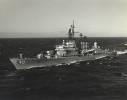 | 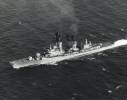 |  | 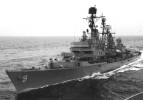 | 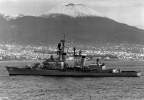 |
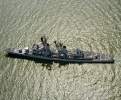 | 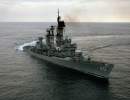 | 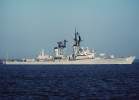 |
 Back to Destroyer list.
Back to Destroyer list.  Back to ships list.
Back to ships list.  Back to selection page.
Back to selection page.  Back to 1st page.
Back to 1st page.